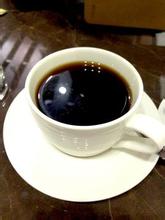The grading method of Kenyan coffee with fine coffee beans
It is believed that Kenyan coffee is one of the boutique coffee chosen by many coffee drinkers. The editor has been introducing the taste and production methods of Kenyan coffee. Today, the editor wants to change the way. Instead, you will introduce how Kenyan coffee is graded. I believe that friends will be very interested in this topic.
First, grading according to the size of coffee beans.
This classification method is based on a variety of perforated screen classification, the screen has a variety of specifications, identified by the number, the number is associated with the mesh. The size of the mesh-1 stroke 64 inches is the unit of calculation. If the diameter of the mesh is 18 stroke 64 inches, the number of the screen is 18; if the diameter of the mesh is 17 inch 64 inches, the number of the screen is 17. And so on, there are 19, 16, 15, 14 and other numbered screens.
The process of screening is to put the coffee beans on the Internet and shake them back and forth by machine or manually, and the beans smaller than the mesh will fall and be removed, and the beans that have been rejected will be screened through a smaller screen. After layers of screening, the grades of coffee beans are compiled.
After classification, it is divided into AA, A, B, C and PB series. AA is the highest, A, B and C decrease in turn, and those below C are usually used as feed or fertilizer. In addition, round beans have a special flavor, and beans are already relatively small, so they have their own grade, that is, "PB", which is usually more expensive. This classification is generally used in Kenya, New Guinea, Puerto Rico, Zimbabwe, Tanzania and Uganda.
Second, grading according to the number of defective beans.
This is the earliest method of classification and is still in use in many parts of Brazil. The method of identification is to randomly take 300 grams of samples and put them on black paper, because black paper can best avoid reflection. Then, examined carefully by the professional appraiser, find out the defective beans in the sample, and accumulate different scores according to the types of defects. For example, one black bean, one pebble, five big pebbles, five broken beans, five pest beans, two sour beans, one dry peel, two middle dried peels, three small dried peels, five unshelled beans, three shell beans, and so on. After identification, the grade is NY2~NY8 according to the accumulated defect score, and there is no NY1. If you want to buy first-class (NY1) Brazilian beans, it will make a joke. Indonesian coffee beans are also classified in this way, mainly divided into six grades, namely Gr1~Gr6. The same is true of Ethiopia, with the highest level being Gr2.
Third, a high degree of classification by origin
Generally speaking, in alpine areas, due to the cold climate and the slow growth rate of coffee, the density of raw beans is higher and the texture is harder, and the more mellow and aromatic the coffee is, and it has a supple sour taste; on the contrary, the density of raw beans is smaller and the texture is less hard, then the quality of coffee is worse, so there are also people who classify it as "hardness". This classification method can be divided into the following categories: extremely hard beans, height of about 4500 to 5000 feet, referred to as SHB; high hard beans, height of about 3000cm 4500ft, referred to as GHB; hard beans, height of about 2000,000ft, referred to as HB; Pacific coastal area, height of about 984ft 3280ft, referred to as Pacific. Guatemala, Costa Rica, El Salvador, Mexico, Honduras and Haiti are all classified in this way.

Important Notice :
前街咖啡 FrontStreet Coffee has moved to new addredd:
FrontStreet Coffee Address: 315,Donghua East Road,GuangZhou
Tel:020 38364473
- Prev

The latest news and details of boutique coffee Brazilian coffee
Brazilian coffee generally refers to coffee produced in Brazil. There is a wide variety of Brazilian coffee, the vast majority of which are unwashed and sun-dried, classified according to the name of the state of origin and the port of transport. Brazil has 21 states and 17 states produce coffee, but four of them produce the largest, accounting for 98% of the country's total output. Brazilian coffee has a low sour taste, which goes well with coffee.
- Next

Rose Coffee the latest introduction of Ethiopian boutique coffee
The species of Geisha was discovered in the Rose Summer Forest of Ethiopia in 1931 and sent to the Coffee Institute in Kenya; it was introduced to Uganda and Tanzania in 1936, in Costa Rica in 1953, and Panama was introduced in the 1970s by Francesca of Dongba Seven Farm Garden. Mr. Serraxin got the seeds from CATIE in Costa Rica and started growing Rosa Coffee because
Related
- Detailed explanation of Jadeite planting Land in Panamanian Jadeite Manor introduction to the grading system of Jadeite competitive bidding, Red bid, Green bid and Rose Summer
- Story of Coffee planting in Brenka region of Costa Rica Stonehenge Manor anaerobic heavy honey treatment of flavor mouth
- What's on the barrel of Blue Mountain Coffee beans?
- Can American coffee also pull flowers? How to use hot American style to pull out a good-looking pattern?
- Can you make a cold extract with coffee beans? What is the right proportion for cold-extracted coffee formula?
- Indonesian PWN Gold Mandrine Coffee Origin Features Flavor How to Chong? Mandolin coffee is American.
- A brief introduction to the flavor characteristics of Brazilian yellow bourbon coffee beans
- What is the effect of different water quality on the flavor of cold-extracted coffee? What kind of water is best for brewing coffee?
- Why do you think of Rose Summer whenever you mention Panamanian coffee?
- Introduction to the characteristics of authentic blue mountain coffee bean producing areas? What is the CIB Coffee Authority in Jamaica?

